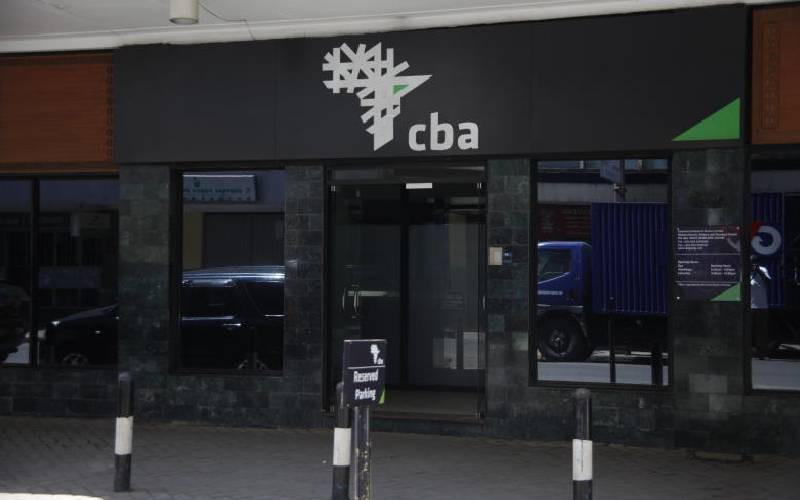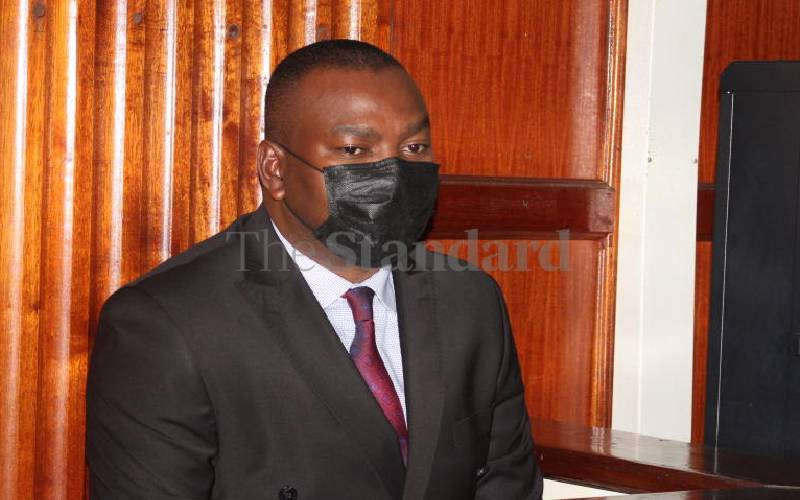
Everything, including drought, Central Bank of Kenya (CBK) Governor Patrick Njoroge teasingly observed in March, is being blamed on interest rate caps.
But for banks, it now appears this wasn’t just a joke. They are in for a “new normal” as their profits for the three months ending March 31, 2017 drop on account of slowed lending and reduced interest income.
Eight out of top ten profitable banks in Kenya recorded an average of 11.33 per cent dip in profits with just Commercial Bank of Africa (CBA) and Diamond Trust Bank (DTB) managing to increase their profits.
With the exception of DTB and CBA, the eight saw their net profit dip by Sh2.12 billion or 9.4 per cent. Barclays Bank of Kenya (BBK) and Standard Chartered Bank of Kenya were heavily hit as their profits dropped by 24.5 per cent and 21.6 per cent respectively.
CBK, National Treasury and Kenya Bankers Association all agree on one thing- that prior to September 2016 decision to cap interest rates, the cost of credit was too high. But its implementation has thrown the three in disarray.
While CBK says its monitory policy role has been blunted by capping of interest rates, commercial banks say their customers have become riskier to lend to. In response, banks have gone slow on lending-their core business- and in the process, shooting themselves in the foot.
“We had to tamper with strategic planning to move to scenario planning. We are no longer focusing on volumes of loans but on quality of loan book,” said Equity Bank Chief Executive Officer James Mwangi in a recent Annual General Meeting.
Two days later, the bank, the largest lender in Kenya in terms of customer base, announced a Sh299.5 million or 5.8 per cent drop in profits to Sh4.8 billion. That was for the first quarter of the year.
During the quarter, its loan book shrunk by Sh13.1 billion or 4.8 per cent to Sh261.8 billion
The reduced lending described by Mwangi as “cautious approach in credit underwriting because of inability to price risk” saw interest income on loans and advances drop by 27.1 per cent to Sh8.1 billion.
Having told investors in 2016 that it was not possible to build a bank by relying on interest income from government securities, the CEO now says liquidity is king and he will use it to lend to less risky customers like government.
Its loan book shrunk for the first time in the third quarter of 2016 even as he put up “come and borrow” plea. The bank is sitting on Sh347.5 billion as customer deposits, being 16 per cent higher than in a similar quarter last year.
Quarter-on-quarter comparison shows that in three months to end of March, the bank received additional Sh10.3 billion adding to the pile of money that could be lend out.Its liquidity ratio is at 50.6 per cent against the regulator’s minimum of 20 per cent.
Loan book for most banks is growing but at lower pace than customer deposits. Out of top 10 profitable banks, just Equity alone shrunk its loan book. Cooperative bank expanded its book the fastest- 15.04 per cent- followed by KCB (14.3 per cent) and Stanbic Bank at 11.4 per cent.
Stay informed. Subscribe to our newsletter
That of BBK expanded by 10.7 per cent or Sh16.3 billion to make it the only bank among the top ten peers to post an increase in interest on loans and advances to customers. However, it was just 0.56 per cent translating to an increase of Sh28.5 million.
With the ceiling on interest rates -400 basis points above the central bank’s benchmark rate of 10 percent- commercial banks’ over reliance on interest income has been exposed.
Nine out of top 10 profitable lenders saw their interest income from loans and advances dip even as they tried to find comfort in lending to the government.
Cumulatively, the top ten club saw the interest income drop by Sh8.1 billion (12.94 per cent) to Sh54.2 billion. Equity Bank took the heaviest beat with a drop of 27.1 per cent or Sh3 billion. While in the first quarter of 2016 it got Sh11.2 billion, the quarter under review saw the income drop to Sh8.2 billion.
CBA saw interest income from loans and advances drop by 18.6 per cent (Sh670.2 million) while that of NIC Bank dropped by 18 per cent or Sh733.5 million. KCB lost Sh1.4 billion.
Customer deposits of these banks rose by an average of 12 per cent, being faster than the pace at which they increased their lending (7.5 per cent).
These banks are now sitting on Sh2.3 trillion or 90 per cent of what Kenya government want to spend in the 2017/18 budget.
But they are pretty comfortable and in no pressure to lend out “recklessly.” Interest expense of seven out of the top ten banks has dropped.
KCB, with deposits rising by Sh33.4 billion saw its expenditure on customer deposits drop by 33 per cent by end of March, 66 per cent of its deposits were demand deposits.
Cooperative Bank also cut its interest expenses on customer deposits by a third (30 per cent) while that of CBA and NIC bank also went down by 33 per cent and 27.1 per cent respectively.
Only Equity (14 per cent), BBK (4.8 per cent) and Standard Chartered (9 per cent) saw an increase in costs of holding customers’ money.
 The Standard Group Plc is a
multi-media organization with investments in media platforms spanning newspaper
print operations, television, radio broadcasting, digital and online services. The
Standard Group is recognized as a leading multi-media house in Kenya with a key
influence in matters of national and international interest.
The Standard Group Plc is a
multi-media organization with investments in media platforms spanning newspaper
print operations, television, radio broadcasting, digital and online services. The
Standard Group is recognized as a leading multi-media house in Kenya with a key
influence in matters of national and international interest.
 The Standard Group Plc is a
multi-media organization with investments in media platforms spanning newspaper
print operations, television, radio broadcasting, digital and online services. The
Standard Group is recognized as a leading multi-media house in Kenya with a key
influence in matters of national and international interest.
The Standard Group Plc is a
multi-media organization with investments in media platforms spanning newspaper
print operations, television, radio broadcasting, digital and online services. The
Standard Group is recognized as a leading multi-media house in Kenya with a key
influence in matters of national and international interest.








